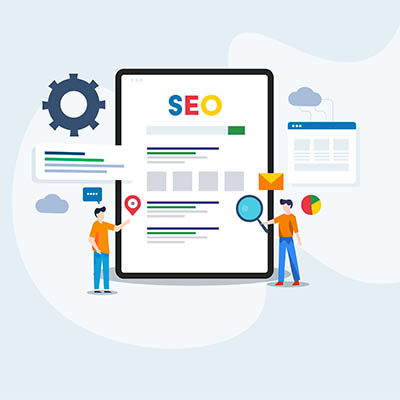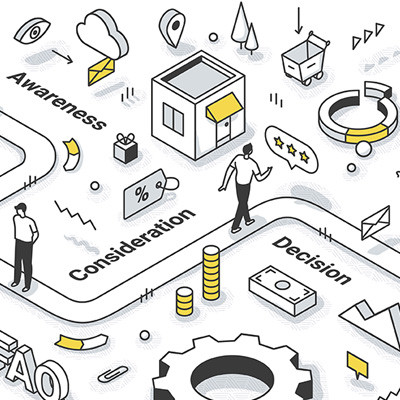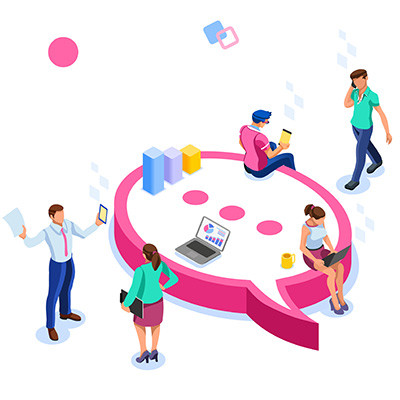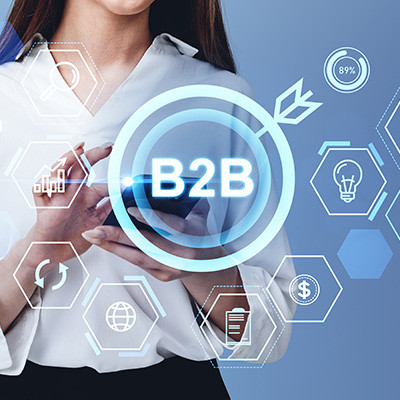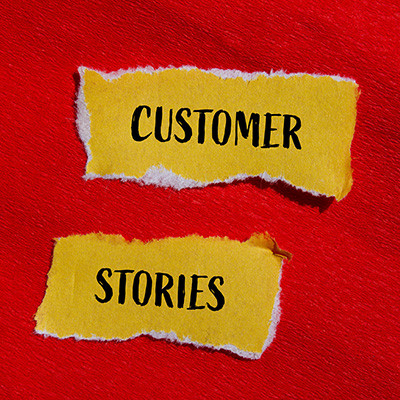When you're struggling to keep your MSP afloat, marketing might feel like a luxury you can't afford. But in today's competitive market, visibility is viability. If prospects can’t find you online or in their inboxes, you simply don’t exist to them. Fortunately, you don’t need a six-figure budget to generate meaningful results. Strategic, time-efficient, and even free tools are available—if you know how to use them effectively, and have a plan.
JoomConnect Blog
Managed service providers face a challenge that should resonate with businesses and organizations of all kinds: they often know their products and services too well, and therefore focus too much on the minutiae—instead of the benefits a product or service brings—when trying to make a sale. While this is never ideal, it can be particularly dangerous for your audience when you’re trying to educate them about cybersecurity, as they’re vulnerable without it.
Therefore, you must position your services not as impressive technological feats, but instead, highlight how they solve your prospect’s problems and assuage their fears. Let’s discuss how you can do so.
We all love a personal touch—the barista who gets your order right, the dentist who asks about your pets. Why not bring that same familiarity to your email marketing?
This is the goal of segmenting your email lists. It enables you to communicate more directly with your contacts and address their specific concerns and needs. Let’s explore what goes into this kind of strategy to maximize the engagement and growth you can see from your own efforts.
While marketing may feel like a fiercely independent endeavor for every business, this is only half true. Sure, you may not want to promote one of your direct competitors… but why not work with another company, in a different industry, to meet both your goals?
This approach is almost a marketing cheat code, the rising tide that raises all ships. Let’s talk about why such partnerships are so valuable and how to take advantage of the marketing advantages for yourself.
Without an understanding of its unique and nuanced client acquisition and retention process, no business—especially a managed IT service provider—is going to find business growth optimally attainable. MSPs especially need to have a structured approach to nurture prospects from the awareness stage of the marketing funnel to become fully-fledged, long-term partners.
One process that greatly helps this endeavor is the use of customer journey mapping.
In any marketing, the success stories of your prior clients can make a particularly large impact on your marketing efforts… more so than pure statistics typically do. This is because client accounts help provide a sense of authenticity to the claims your marketing makes. Hence, precisely why client testimonials are so impactful.
On top of that, there’s no denying that their impacts can be amplified by expanding them into full-blown case studies. Let’s go over how you can do so for your business’ benefit from start to finish… obtaining a testimonial, acquiring permission to expound upon it, and crafting an account that aligns with best practices.
Alright, let's cut straight to it. You’ve probably heard it, maybe even done it: buying up a ton of domain names packed with your favorite keywords.
BestMarketingAgencyAnytown.com TopWidgetsOnlineStore.com CheapAndBestLocalServices.com
The idea? Point them all to your main website and BOOM! Instant SEO superstardom, right? Watch those rankings climb!
Hold up.
Acquiring new clients—especially as a managed service provider—often commands significant attention and resources. However, a valuable pool of potential revenue could already be in your existing database: prospects who may have previously shown interest but have since become less engaged, or past clients whose contracts have lapsed.
Neglecting these dormant opportunities can be a costly oversight. A well-defined strategy for re-engagement not only offers a more efficient path to revenue generation but also leverages the prior investment made in initial outreach and relationship building.
SEO is important, but being found online goes beyond just whether or not your website is optimized.
Let's talk about expanding your digital footprint beyond the confines of your own website. Building your reputation and authority outside of your website is where off-page Search Engine Optimization (SEO) comes in, and it's vital for attracting those high-value local clients.
As an expert in your field, you possess a wealth of expertise and valuable insights that can resonate deeply with your target audience, encouraging them to engage with you…but this may not be enough. You still need your audience to consume your content for it to offer value to your marketing efforts.
The challenge often lies in effectively distributing your content across the various channels your potential clients will use. This is where the strategic art of content repurposing emerges as a powerful ally. Let’s review some best practices for squeezing every drop of value from the content you deliver to your audience.
Let’s rip off the Band-Aid and just say it:
Yes, direct mail remains valuable to a business’ comprehensive marketing strategy, particularly in B2B applications. The only caveat is that it must be used strategically for this to stay true.
Let’s take a few moments to review why direct mail is commonly seen as a good tactic and how you can (and should) optimize it for your organization’s operational benefit.
Let me ask you this: if everyone else jumped off a bridge, would you, too? You might… IF you were presented with evidence that everyone else had enjoyed some benefit from doing so.
This is the power of social proof—a phenomenon where we’re motivated to mimic those we see enjoying success to share in that success. We ask friends for restaurant recommendations or who they go to when they have a specific need, and we crowdsource these opinions online all the time.
Let’s explore how you can promote this discourse around your business services and use it in your marketing efforts.
It’s one thing to attract new people to your business initially… it’s quite another to keep their interest over time and cultivate a professional relationship with them. As such, it is important that you look beyond pure engagement… past the sizzle, so to speak… when communicating with your audience.
You also need to consider how you should follow up on your engagement efforts to reach a sale and how to keep these new clients engaged with your services and interacting with you long afterward. Let’s discuss a few strategies you may consider in your attempts to do just that.
Seeking out the right businesses for your managed IT service offering is critical to your success; otherwise, you’ll find yourself trying to make deals with people who simply aren’t the right fit. This means that you need to seek out these businesses mindfully and strategically.
Let’s break down how you can more effectively identify who makes up your ideal audience and optimally target them.
So, your team has an SEO strategy for your MSP website chugging along. You follow best practices and can drive high-quality, relevant traffic better than a dancing traffic cop. There’s just one problem: no calls, no forms completed, no emails received, and no conversions at all. So, what are you doing wrong?
The problem isn’t your SEO. What you actually need to do is reconsider your closing argument as to why you, not your competitors, are the best option.
Cold outreach has had a bad rep in modern marketing, but this reputation has not stopped it from being highly utilized and highly successful… when it’s done right.
Let’s review what you can do to make your cold outreach efforts more successful.
Social media is a hugely helpful tool for businesses, especially those that function as providers for other companies. Using social media to promote your B2B operations helps you communicate directly with your target audience… provided your target audience actively follows you on your business profiles.
Let’s talk about ways you can organically build your business’ following (and, crucially, engagement) on social media.
Let me ask you an important question: would you find a statement more impactful if it came from a business or if it was presented from the perspective of one of its clientele?
It's probably the second option. It only makes sense… even if it’s the business distributing it, the fact that someone else’s name is tied to a statement adds significant confidence that the contents are trustworthy. This is precisely why client success stories can be so compelling when featured in your marketing.
Let’s talk about how to use these powerful marketing tools for yourself, but first…
Capturing leads is only the first stop. Turning them into clients? That’s where the real challenge lies. Success isn’t just about making a good first impression—it’s about maintaining the momentum. A well-crafted email nurture sequence bridges the gap between the initial interest and long-term commitment, providing a scalable, strategic way to guide leads through the sales funnel.
Trust is the bedrock of any successful business relationship. Whether it’s a business owner depending on their employees to do the right thing, a company relying on its vendors to deliver what’s been promised, or a prospect choosing between service providers, trust is the differentiator that turns prospects into loyal customers.


